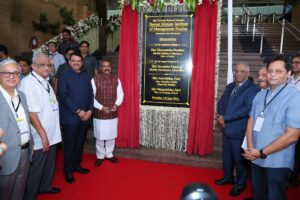
ICRA Ratings has estimated that the financial creditors would realise more than Rs. 800 billion in FY2020 from the Insolvency and Bankruptcy Code (IBC), compared to about Rs. 660 billion realised in FY2019. The higher realisation in FY2020 would be driven by the expected conclusion of the CIRPs of two large accounts, viz. Essar Steel Limited and Bhushan Steel and Power Limited. Both these accounts are part of the RBI’s list of the 12 largest defaulting companies announced in June 2017.
Says Mr. Abhishek Dafria, Vice President & Co-Head, Corporate Ratings, ICRA, “Successful completion of the
CIRP for these two accounts would bring closure to eight companies from the RBI’s list and could help strengthen the confidence in the IBC, despite the significant delays seein in the process with most of the CIRPs lasting more than 500 days. However, despite the hurdles being faced by the IBC, we expect the number of cases being admitted to the National Company Law Tribunal (NCLT) to continue to increase, especially from the operational creditors who are responsible for 50% of all cases admitted by the NCLT.”
The progress of the Corporate Insolvency Resolution Process (CIRP) under the IBC has been hampered over the past two years by the over-burdened NCLTs, innumerable litigations, defiant promoters and failing sectors. Even then, the process under the IBC has chugged on, albeit at a slower pace than envisioned. As of March 31, 2019, 715 cases of defaulting corporate debtors had been closed under the IBC. Of the same, a significant portion of corporate debtors (378 cases) were ordered into liquidation, while only 92 CIRPs 1 yielded a resolution plan where the companies continue to operate as going-concerns.
In April 2019, the Honourable Supreme Court of India cancelled the February 2018 circular of the Reserve Bank of India (RBI) which directed banks to recognise one-day defaults by large corporates and refer the large defaulting entities (classified as those with loans in excess of Rs. 2,000 crore) to the NCLT if a resolution plan was not in place 180 days after the default.
The RBI’s circular would have channelled the resolution process of the defaulting corporate debtors through the framework set by the IBC and thereby encouraged the creditors to approach the NCLT at an early stage of default. The decision of the Honourable Supreme Court is a blow to the IBC and it is important for the RBI to find a new mechanism to ensure that resolution of stressed assets happen in a disciplined manner.
The NCLTs continue to remain heavily burdened as the number of cases being admitted continues to increase
quarter-on-quarter with the highest quarterly admissions of 359 cases reported in Q4 FY2019. As the timelines for the CIRP continue to get stretched, with 32% of the on-going CIRPs as on March 31, 2019 having already crossed the maximum allowed time of 270 days, the number of admitted cases that are yet to be resolved are only increasing.
“As of March 31, 2019, the number of on-going CIRPs had increased to 1,143. In order to improve the overall efficiency of the process, more steps are desired. The recent decision to setup two more NCLT benches at Amaravati in Andhra Pradesh and at Indore in Madhya Pradesh is a step in the right direction. Over the long run, the IBC will continue to play an important role in the country’s economy as long as the key stakeholders remain proactive in disbursing their duties and continue to have confidence in the process,” concludes Mr. Dafria.



